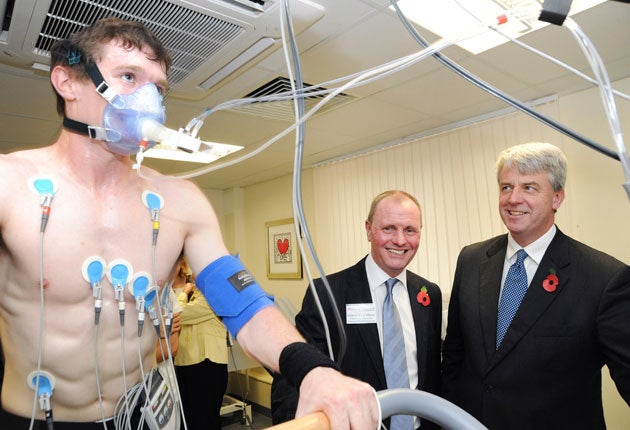Revolutionary 'wrist watch' to monitor high blood pressure

Your support helps us to tell the story
From reproductive rights to climate change to Big Tech, The Independent is on the ground when the story is developing. Whether it's investigating the financials of Elon Musk's pro-Trump PAC or producing our latest documentary, 'The A Word', which shines a light on the American women fighting for reproductive rights, we know how important it is to parse out the facts from the messaging.
At such a critical moment in US history, we need reporters on the ground. Your donation allows us to keep sending journalists to speak to both sides of the story.
The Independent is trusted by Americans across the entire political spectrum. And unlike many other quality news outlets, we choose not to lock Americans out of our reporting and analysis with paywalls. We believe quality journalism should be available to everyone, paid for by those who can afford it.
Your support makes all the difference.Scientists have developed a "wrist watch" device to measure blood pressure that could see thousands of patients taken off treatment.
The new measuring device is the first for over a hundred years and provides a more accurate reading than the traditional arm cuff.
Blood pressure is currently measured in the arm because it is convenient and easy to carry out. More than one in four adults has high blood pressure, including 50 per cent of those over 60, and millions are receiving drug treatment to reduce it. High blood pressure increases the risk of heart attacks and strokes.
The "wrist watch" device, funded by the Department of Health and backed by Health Secretary Andrew Lansley, has been invented by scientists at the University of Leicester and in Singapore. It includes a sensor strapped to the wrist which can measure the pressure in the aorta, the main artery close to the heart, where high blood pressure does most damage.
A sensor in the watch records the pulse wave of the artery, which is then fed into a computer together with a traditional blood pressure reading from a cuff.
In most people the pressure in the aorta is 10mm Hg lower than in the arm, but in some, especially younger people, it is as much as 30mm Hg lower. One in 10 of the under-40s have high blood pressure, as measured at the arm, and some may be able to come off treatment when measured with the new device. Bryan Williams, professor of medicine at the University of Leicester, who led the research with HealthSTATS, a Singapore-based medical device company, said: "It is not going to replace what we do overnight but it is a big advance. It is most likely to mean some people currently receiving treatment will not need it."
Some drugs affect blood pressure differently in the aorta and in the arm and the device would improve monitoring of their effect, he said. Its cost would be "not much different from the top end of what we use now".
"I think the new method will become increasingly adopted. It has the potential to become the preferred method of measuring blood pressure," Professor Williams said.
Mr Lansley said: "I saw this new technique in action in Leicester when I visited a few months ago. This is a great example of how research breakthroughs and innovation can make a real difference to patients' lives."
Judy O'Sullivan, senior cardiac nurse at the British Heart Foundation, said: "There are limitations to the conventional way of measuring blood pressure because measurements in the arm don't always correspond to the pressure in the artery close to the heart, which is more critical, but it still provides valuable information."
Join our commenting forum
Join thought-provoking conversations, follow other Independent readers and see their replies
Comments